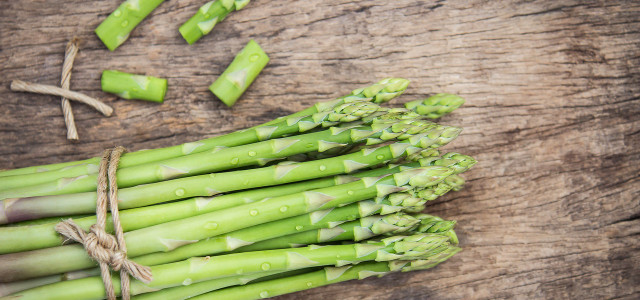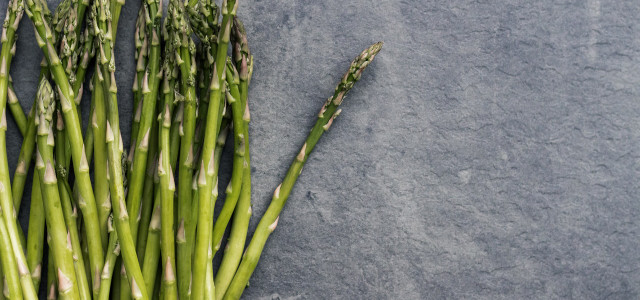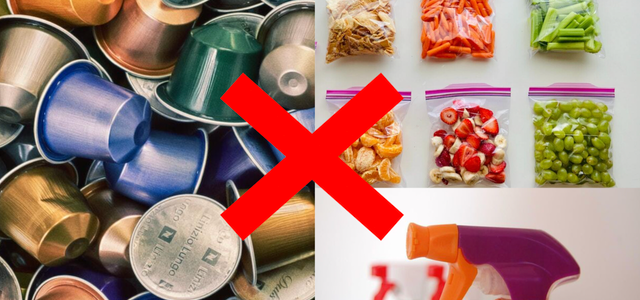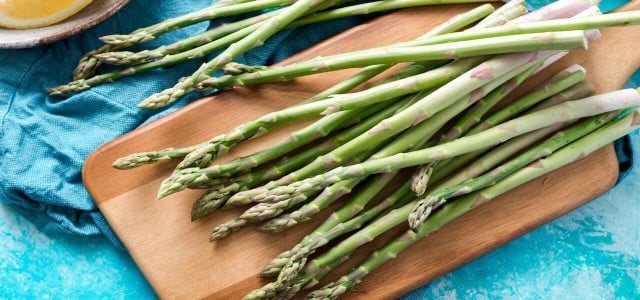Learn how to freeze asparagus perfectly every time with our step-by-step guide to freezing asparagus while retaining its freshness and flavor.
Asparagus, a highly nutritious and versatile vegetable, is a favorite for many during its brief growing season. Unfortunately, its short availability can limit our ability to enjoy its unique flavor and health benefits throughout the year. Knowing how to freeze asparagus can be an effective solution, allowing for long-term storage without sacrificing quality or contributing to unnecessary food waste.
We’ll walk you through a simple, eco-friendly process for freezing asparagus that ensures it retains its fresh taste, texture and nutritional value. With just a few easy steps, you’ll be well on your way to savoring this springtime favorite whenever you please. So, let’s reduce our carbon footprint and preserve the bounty of the season by learning how to freeze asparagus perfectly every time!
Selecting and Preparing Asparagus for Freezing
To embark on your eco-friendly asparagus freezing journey, it’s crucial to begin with fresh and high-quality ingredients. Ensuring your asparagus is in tip-top shape will make a world of difference in the final result, keeping your frozen stash delicious and nutritious. So, how do you spot the perfect asparagus for freezing? Here are some key features to look out for:
- Firm and crisp texture: Give your asparagus a gentle squeeze. It should feel firm and robust, not limp or wilted. When you bend the stalks, they should snap cleanly — a clear indication of freshness.
- Bright green color with minimal white or yellowing: Fresh asparagus boasts a vibrant green hue that’s hard to miss. Be cautious of stalks with excessive white or yellow portions, as this can be a sign of age or poor storage conditions.
- Tight, closed tips: The tips of asparagus are one of its most prized parts. Look for compact, closed tips that appear moist and healthy. Avoid any that are dry, mushy or have begun to open, as these may not freeze well.
Tip: You can reuse vegetable scraps like asparagus peel to make soup or other delicious meals.
Washing and Trimming Asparagus



Once you’ve picked out the finest asparagus, it’s time to give it a good cleaning and trim. This simple prep work is essential for preserving the quality of your asparagus and making it freezer-ready:
- Rinse under cold water: Hold your asparagus under cold running water, gently rubbing the stalks to remove any dirt, grit, or debris. Be sure to pay special attention to the tips, as they can often harbor hidden soil.
- Snap or cut off tough ends: Asparagus stalks can be woody and fibrous at their base, which doesn’t make for great chewing. To remove these tough ends, you can either snap them off by hand or use a sharp knife to trim them away. The natural breaking point will typically be where the stalk becomes tender.
Optional: Cut your asparagus into smaller pieces. Depending on your plans, you may want to cut your asparagus into smaller pieces before freezing. Doing so will save you time and effort later, making it easier to whip up delicious dishes on the fly.
Now that your asparagus is fresh, clean and trimmed, you’re all set to move on to the next phase: blanching.
Blanching Before Freezing
Before you get to freezing your asparagus, there’s an important step to consider: blanching. This quick and straightforward process plays a crucial role in preserving your asparagus’s color, texture and nutritional content, as well as preventing the growth of bacteria and enzymes that could spoil your frozen stash. In essence, blanching preps your asparagus for the big freeze while maintaining its quality.
Follow these steps to blanch asparagus:
- Boil a large pot of water: Fill a sizable pot with water and bring it to a rolling boil. Be mindful of your water usage; only use as much as you need to submerge your asparagus completely.
- Place it in the boiling water for the appropriate time based on thickness: The blanching time will vary depending on the thickness of your asparagus stalks. For pencil-thin stalks, 2 minutes should suffice; medium stalks may require 3 minutes, while jumbo stalks can take up to 4 minutes. Remember, blanching is a quick process, so don’t overcook your asparagus!
- Quickly cool it in an ice bath to stop the cooking process: To halt the blanching process and lock in freshness, prepare an ice bath by filling a large bowl with ice and cold water. As soon as your asparagus has finished blanching, use a slotted spoon to transfer it to the ice bath. Let it cool for the same time it spent blanching.
Optional: Add salt for flavor preservation. Though not a must, adding a pinch of salt to the boiling water can help preserve the natural flavor of your asparagus during the blanching process.
Drying and Packing Asparagus for the Freezer
Now that your asparagus has been blanched and cooled, it’s essential to remove any excess moisture before packing it for freezing. Drying your asparagus thoroughly ensures that it won’t become soggy or clump together in the freezer. Follow these tips to dry your asparagus efficiently:
- Drain in a colander: After its ice bath, transfer the asparagus to a colander, allowing any excess water to drain off. Give the colander a gentle shake to dislodge any lingering droplets.
- Pat dry with a clean, reusable towel: To absorb any remaining moisture, lay your asparagus out on a clean kitchen towel or reusable cloth and gently pat it dry. If you prefer, you can use paper towels, but be mindful of their environmental impact — try to minimize kitchen waste where you can.
Read on: 8 Sustainable Paper Towel Alternatives for Every Use
With your asparagus now dry, it’s time to pack it up for the freezer. Here’s how to do so in an eco-friendly way:
- Label with the date and contents: Stay organized and reduce food waste by labeling your bags or containers with the date and contents. This way, you’ll always know how long your asparagus has been stored and when it’s time to enjoy it. Read our guide 7 Smart Household Hacks for Freezing Foods Without Plastic for pointers on how to freeze food in an eco-friendly way.
- Remove excess air to prevent freezer burn: Before sealing your bags or containers, press out as much air as possible. This helps prevent freezer burn and keeps your asparagus in prime condition.
- Arrange asparagus in a single layer for even freezing: When packing your asparagus, lay the stalks in a single layer, avoiding overcrowding. This arrangement ensures that your asparagus freezes evenly and makes it easier to grab individual pieces later on.
Next, we’ll discuss freezing and storing tips to maximize your asparagus’s shelf life and quality.
How to Freeze Asparagus
With your asparagus properly prepped and packed, it’s time for the main event: freezing! Place your bags or containers of asparagus in the freezer, ensuring that they remain flat and in a single layer for optimal freezing results. Avoid stacking or squishing, which can lead to uneven freezing or damage the delicate stalks.
Optimal Freezer Temperature for Long-term Storage:
To keep your asparagus in tip-top shape, it’s crucial to maintain the right freezer temperature. The ideal setting for long-term storage is 0°F or lower. This consistently cold environment helps preserve the flavor, texture, and nutritional content of your asparagus while preventing the growth of bacteria and spoilage.
How Long Does Frozen Asparagus Last?
When stored correctly, your frozen asparagus can last up to 8-12 months. However, the quality may start to decline after several months. To make the most of your frozen asparagus, rotate your stash and consume older batches first. This way, you can reduce food waste and enjoy the freshest possible vegetables.
How to Thaw and Cook Frozen Asparagus
When you’re ready to transform your frozen asparagus into a mouthwatering meal, you have several eco-friendly thawing methods to choose from:
- Refrigerator thawing: For a gentle and energy-efficient thaw, place your asparagus in the refrigerator for several hours or overnight. This method ensures even thawing and helps maintain the asparagus’s quality and texture.
- Cold water thawing: If you’re in a hurry, you can submerge your sealed freezer bag or container in a bowl of cold water. Be sure to change the water every 30 minutes to maintain a consistent temperature. Remember to minimize water waste by reusing the water for your plants or other purposes.
- Cook directly from frozen: In some cases, you can skip thawing altogether and cook your asparagus straight from the freezer. This method works particularly well for steaming, roasting or sautéing. Cooking times may need to be adjusted slightly to account for the frozen state.
Cooking Tips for Maintaining Flavor and Texture:
To ensure that your eco-friendly frozen asparagus is as delicious as the day you picked it, try these cooking methods that preserve its flavor and texture:
- Steaming: Gently steam your thawed or frozen asparagus in a steamer basket over simmering water until tender-crisp. Steaming helps lock in nutrients and keeps the asparagus vibrant and snappy. You can also try steaming asparagus in the microwave.
- Roasting: Toss your thawed or frozen asparagus with a drizzle of oil and your favorite seasonings, then grill or roast asparagus in the oven at 425°F until tender and slightly caramelized. Roasting brings out the natural sweetness and deep flavor of the asparagus. Did you know you don’t have to preheat the oven every time?
- Sautéing: In a large skillet over medium heat, sauté your thawed or frozen asparagus with a bit of oil, stirring occasionally until it reaches your desired level of tenderness. Sautéing offers a quick and flavorful way to enjoy your asparagus, with minimal impact on its texture and nutritional content.
Do you like this post?










